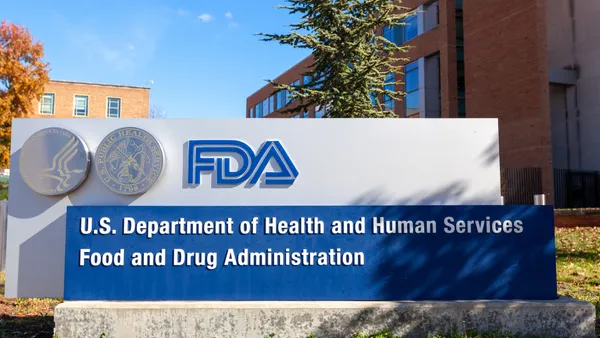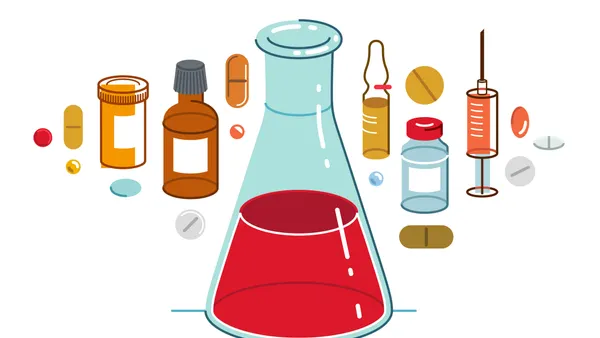The pharmaceutical industry is at an unprecedented time in its evolution. Our PharmaVOICE 100 say the shifting influences of the patient, the payer, and technology are changing how medicines are developed and how care is delivered. The convergence of mobile technologies, diagnostics, and personalized medicine will bring about a future where we fluidly receive the information to prevent disease and enhance well-being every day.
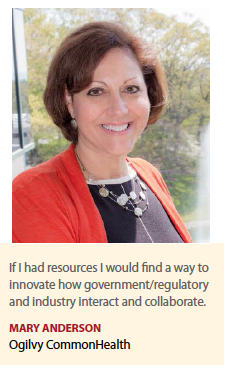 “We are on the brink of a very different way healthcare is going to work," says Marianne De Backer, Ph.D., VP, Johnson & Johnson Innovation, Janssen Business Development. “The ability to create the right partnerships and connections between a broad variety of partners — IT, tech, biotech, pharma, government, etc. — will be critical to be successful in this new world."
“We are on the brink of a very different way healthcare is going to work," says Marianne De Backer, Ph.D., VP, Johnson & Johnson Innovation, Janssen Business Development. “The ability to create the right partnerships and connections between a broad variety of partners — IT, tech, biotech, pharma, government, etc. — will be critical to be successful in this new world."
These changes, however, bring with them many challenges, from managing change, to competition for talent, to revamping processes, to dealing with legacy systems. The rules and behaviors that proved successful during the past few decades are no longer sufficient to assure success going forward.
One of the biggest areas of challenge is in the drug development and clinical trials space to help get new, safer, more effective drugs into the hands of patients who need them in less time, at a fraction of the cost, and with far less risk to research volunteers.
According to the most recent analysis by the Tufts Center for the Study of Drug Development, the average cost to develop and gain marketing approval for a new drug is $2.558 billion. The $2.558 billion figure per approved compound is based on estimated average out-of-pocket costs of $1.395 billion and time costs (expected returns that investors forgo while a drug is in development) of $1.2 billion.
When post-approval R&D costs of $312 million are included, the full, product lifecycle cost per approved drug, on average, rises to $2.9 billion, according to Tufts CSDD.
Factors that helped boost out-of-pocket clinical costs were increased clinical trial complexity, larger clinical trial sizes, higher cost of inputs from the medical sector used for development, changes in protocol design to include efforts to gather health technology assessment information, and testing on comparator drugs to accommodate payer demands for comparative effectiveness data.
“We have to create a new model for clinical trials in which each component has been optimized and needless administrative delays and sources of friction among the parties involved have been removed," says Donald Deieso, Ph.D., chairman and CEO, WIRB-Copernicus Group.
John Hubbard, President and CEO, Bioclinica says the industry needs to find ways to create a more efficient model for drug development, breaking down the barriers across the industry and improving collaboration with patients, investigators, regulators payer, service providers, and the biopharmaceutical industry.
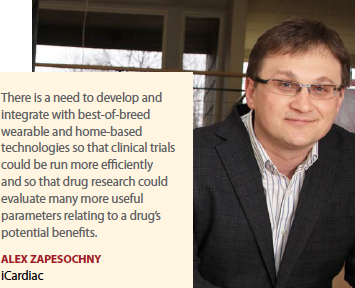 “Despite years of trying, we still have an industry with multiple silos from research, through development, and commercialization," he says.
“Despite years of trying, we still have an industry with multiple silos from research, through development, and commercialization," he says.
“This is now amplified due to extreme commercial pressures across the biopharmaceutical and healthcare ecosystem."
Drug developers, Tufts researchers say, are taking action to rein in rising development costs, including increasing efforts to discover, validate, and use biomarkers, adopting new approaches to patient recruitment and retention, and implementing leading-edge project management practices, but they face strong headwinds, given the complexity of the problems they’re addressing.
Improving the clinical trial process, however, holds the greatest promise for enhancing R&D efficiency, he said, including reducing clinical trial complexity, engaging with new partners, and working more closely with regulators.
Longer-term prospects for developing new drugs to treat an expanding array of medical conditions will flow from policy changes, such as shifting some of the U.S. National Institutes of Health grant funding from translational research back to basic research.
Just as critical is making sure early stage companies have access to resources, says Debbie Hart, president and CEO of BioNJ.
“While there are many important areas that would benefit from unlimited resources, I am focused here on the significant funding needs of early stage companies," she says. “If we make sure these companies are well-funded, important new therapies and cures will make their way through 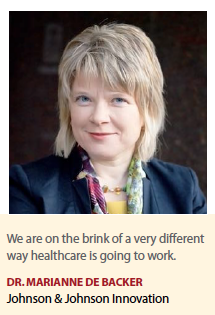 the system to the patients who need them. So, first I would address the capital needs of government in the form of funding of the FDA and the NIH. Additional funding could then be channeled to VCs and other funders of industry to address the remaining significant capital needs. At the same time, I would focus on removing unnecessary regulatory hurdles that result in unnecessary costs to the drug development and approval process. This challenge must be addressed from both capital creating and cost-cutting perspectives."
the system to the patients who need them. So, first I would address the capital needs of government in the form of funding of the FDA and the NIH. Additional funding could then be channeled to VCs and other funders of industry to address the remaining significant capital needs. At the same time, I would focus on removing unnecessary regulatory hurdles that result in unnecessary costs to the drug development and approval process. This challenge must be addressed from both capital creating and cost-cutting perspectives."
Technology Can Address Some Challenges
We have to find the way to leverage data and technology to reduce time and costs so that we can continue to bring new medicines to patients who are waiting, says Lindy Jones, senior VP, site management and therapeutic strategy, chair of EMEA LA management board at Quintiles.
“Technology advances and data insights and knowing where to go to conduct trials can help eliminate waste in the system," she says.
“Leveraging technology can reduce the burden of human capital required as well as help with early detection of alerts or errors."
Jules Mitchel, Ph.D., president of Target Health, says he would have all clinical trials for a given disease in the cloud so that all we would have to do is add a new treatment to an existing protocol.
“I would work with the pharmacy industry to be an integral part of post-marketing surveillance as all prescriptions are now electronic so it is easy to track fulfillment and renewals," he says. “All the pharmacist would have to do before payment is ask. ‘How are you doing’ and enter appropriate safety finding in a coded manner. This way, drugs could get to the market sooner and then followed in the real world. From a business perspective. I would extend the marketing exclusivity for all novel drugs based on when the product is approved and not just based on the patent life or current rules. I would then jawbone the industry on having a reasonable pricing structure since having a drug treatment should be right and not a privilege."
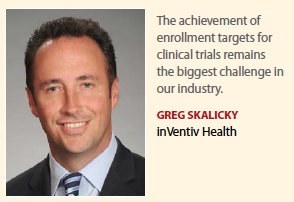 Amy Grahn, global senior VP, clinical development and operations, Horizon Pharma, says she would like to see a smart electronic bridge from EMR to clinical data bases so that data not need be entered, monitored or queried as it would come directly from the source.
Amy Grahn, global senior VP, clinical development and operations, Horizon Pharma, says she would like to see a smart electronic bridge from EMR to clinical data bases so that data not need be entered, monitored or queried as it would come directly from the source.
“I would work to educate the FDA to understand the burdens all the regulations put on the industry which cause costs to escalate and innovation to be stifled," she says.
Alex Zapesochny, president and CEO, iCardiac Technologies, says there is a need to develop and integrate with best-of-breed wearable and home-based technologies so that clinical trials could be run more efficiently and so that drug research could evaluate many more useful parameters relating to a drug’s potential benefits.
Gregg Fisher, managing partner, the Stem, says the convergence of mobile technologies, diagnostics, and personalized medicine will bring about a future where we fluidly receive the information to prevent disease and enhance well-being every day.
“We are witnessing this today with wearable health devices and personalized genomic tests, but this is just the start," he says. “I envision a future where health data and support is present at the moment we need it across multiple touch points, our medicine cabinet, our automobile, etc. This future promises to lengthen life spans and bring down health costs but keeping us out of the hospital. So, with unlimited resources, I would seek to finance and incubate companies that would accelerate the development of technologies that empower consumers and patients with information and support."
Patient Enrollment Still a Challenge
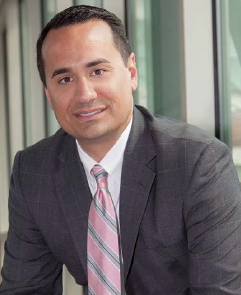 Tufts researchers also point out the needs to improve patient recruitment, and they say drug developers are innovating clinical study volunteer recruitment and retention to significantly improve clinical trial performance and efficiency.
Tufts researchers also point out the needs to improve patient recruitment, and they say drug developers are innovating clinical study volunteer recruitment and retention to significantly improve clinical trial performance and efficiency.
Some of those new approaches include using big data to identify and understand patient populations, engaging the voice of the patient in trial design, and using new technologies and social media to reach, attract, and keep patients.
The need to improve patient enrollment and retention rates is urgent and becoming more so, especially as we enter the era of stratified and precision medicines, in which investigative sites will need to recruit volunteers from more narrowly defined, and therefore more limited, sub-populations, Tufts researchers say.
A typical Phase III protocol now entails an average of 167 procedures, 60% more than at the start of the millennium. Protocol amendments also had to costs. The total median direct cost to implement a substantial amendment for Phase II and Phase III protocols is $141,000 and $535,000, respectively, according to the Tufts CSDD analysis, which defined a substantial amendment as any change to a protocol on a global level requiring internal approval, followed by approval from the institutional or ethical review board or regulatory authority.
The industry faces two major problems: not enough patients to participate in clinical trials as a result of there not being enough investigative sites, says Greg Skalicky, chief commercial officer at inVentiv Health.
“The achievement of enrollment targets for clinical trials remains the biggest challenge in our industry," he says. “In many cases, new medications that are being developed are superior to existing products yet only 3% of the population participates in clinical trials. I firmly believe that if we take 10% of existing physicians and train them to participate in clinical trials we can increase the number of patients overnight."
Regulatory Challenges
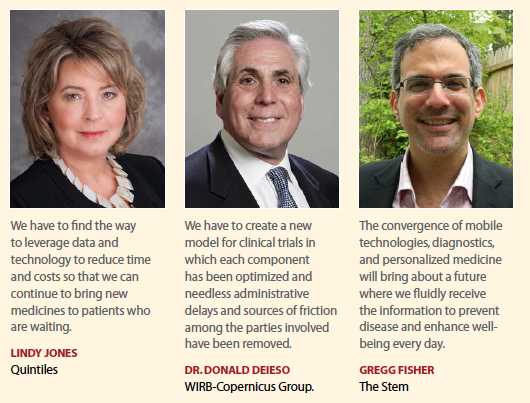 Our PharmaVOICE 100 say regulatory issues hamper the drug development as well.
Our PharmaVOICE 100 say regulatory issues hamper the drug development as well.
A critical industry challenge that has gone unaddressed for many years is the length of time it takes for FDA assessment and approval of NDA submissions, says Jason Noto, director, neurology customer strategy, Sunovion Pharmaceuticals.
“Additional barriers that have recently arisen with greater frequency are the FDA AdCom panels — and subsequent FDA decisions — that are limited in their ability to recommend approval based on the precedent of prior data mandates," he says. “The issue often arises in clinical trials that address rare diseases with small patient numbers and few treatment options. For individuals and loved ones afflicted with the disease, this sort of delay or denial to new therapeutic options that have shown effect is heartbreaking. If unlimited financial resources were available, I’d advocate for increased pharma funding of agency FTEs to provide more expedient reviews and decisions of clinical compounds."
Chris Perkin, CEO of Altasciences, says he would standardize the global testing regulations to get new drugs from the bench to the market.
“A single set of protocol and safety guidelines, using best practices from global experience," he says. “Sharing adverse effects and molecular structure data with changes to the testing requirements agreed globally based on experience would result in a faster, safer and cheaper route to marketing approval or abandoning the drug."
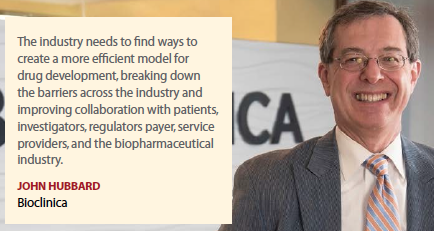 Kilian Weiss, general manager, KOL solutions, Veeva Systems, says around the world, he can see how regulation constrains innovation, especially around new business models enabling solutions for patients.
Kilian Weiss, general manager, KOL solutions, Veeva Systems, says around the world, he can see how regulation constrains innovation, especially around new business models enabling solutions for patients.
“This concerns me as it has direct impact on patients," he says.
Mary Anderson, president, Ogilvy CommonHealth, Medical Education and Scientific Communications and Information, agrees.
“If I had resources I would find a way to innovate how government/regulatory and industry interact and collaborate," she says. “I would work towards a more trusting and patient-centric cooperation that would still benefit the shareholder. I haven’t figured out how to fix it yet. The challenge represents more than a full-time job." (PV)










